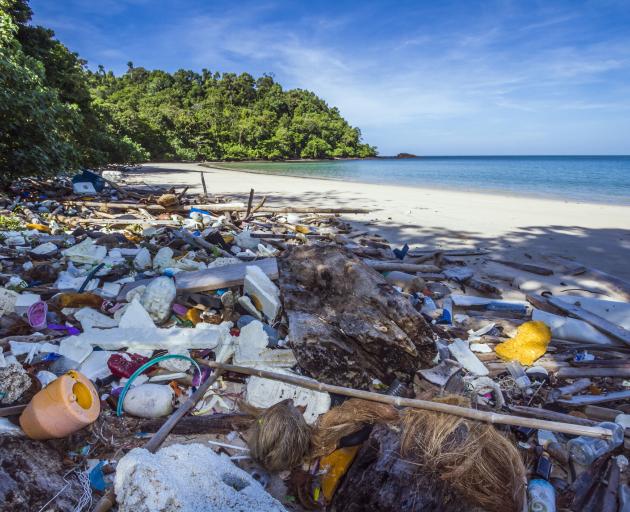
I have an elderly aunt who is friendly and cheerful, kind and helpful, serene and calm. She never shows any sign at all that her long life has had its share of loss, trauma, and sadness. The ocean is like that. You can stand on a beach and look out across the shining blue surface, and you simply cannot see all the ways that the ocean has been damaged and hurt.
For a long time, most of what happened on land was just too small to affect the sea. The ocean is huge. The run-off from land was literally just ‘‘a drop in the ocean’’. It has taken a combination of industrial scale-up and more than 5 billion people to really begin to affect the impenetrable seas — not an achievement to be proud of.

Hugely huge and magnificently gigantic, the ocean surely is large enough to absorb anything we can put into it? That would be true if there weren’t so many of us — at 7.9 billion people, we each get 0.17 cubic km to pollute for, on average, 73 years. And we sure do.
There is little need for a catalogue of what people do to the oceans: we add things that don’t belong there (plastic, sediment, sewage, chemicals); we take things away that do (fishing, mining, bycatch); and we generally cause havoc (habitat destruction, climate change). It’s not too strong to say the global oceans are in a state of crisis.
Everything we put in the ocean moves around, because the global ocean is self-mixing. Water temperature is different at the poles from the equator, and because seawater of different temperatures has different densities, the ocean moves. Like a conveyor belt it stirs itself from the Antarctic to the North Atlantic and back again, lifting cold enriched bottom water into the sunlight, and sucking down bright plankton-filled surface water into the cold depths. The full trip around the world’s oceans takes about 1000 years.
For almost all of the history of Life on Earth (3.5 billion years), very few things that happened on land made a difference to the sea. The great land extinction of 65 million years ago that erased the giant reptiles affected only the larger creatures at sea. But there have been great marine extinctions. In the so-called ‘‘Great Dying’’ at the end of the Permian period, more than 80% of marine creatures became extinct, possibly due to rising temperatures and ocean acidification caused by volcanoes emitting carbon dioxide into the atmosphere.
Sound familiar? We are heading that way.

It’s enough to upset even my aunt.
Can ordinary people make much difference? We can try! We can pay attention to where our rubbish goes, support conservation measures such as marine reserves (one third of Aotearoa NZ land is in protected parks and reserves; in the sea less than 1% is protected), and eat from sustainable fisheries. Most importantly, we can convey our concern to those who have the power to affect our interactions with the environment.
The ocean is huge, the crisis is global, and we need governments to step up to regulate human activities that affect the oceans. Everyone from district and regional councils to Parliament to the United Nations needs to take action, to save our seas. The most effective thing we can do is to tell them so.
Abby Smith is a professor of marine science at the University of Otago.












